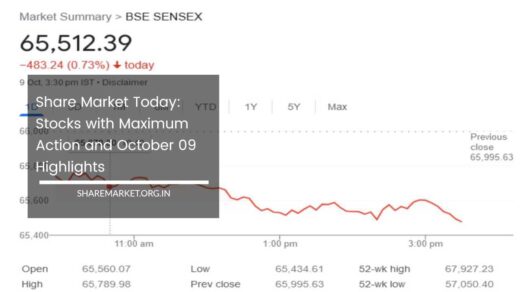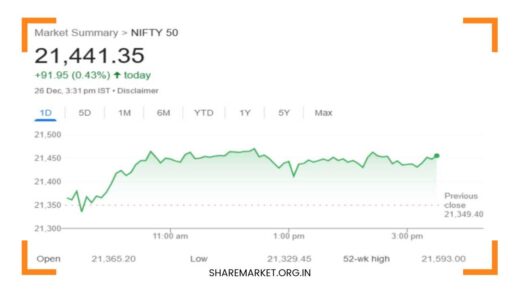Adani Group Stocks Plunge 13%, Wipe Out Rs 90,000 Crore in Market Cap

Adani Group Stocks
Adani Group’s Bloodbath: A Deeper Dive into the Market Mayhem
Market Carnage Engulfs Adani Stocks:
March 13th, 2024, witnessed a turbulent day for the Indian stock market. A relentless wave of selling pressure targeted Adani Group shares, leading to a precipitous decline of nearly 13% across the board.
This widespread sell-off resulted in a staggering loss of Rs 90,000 crore in market capitalization by midday, signifying the severity of the downturn.
Beyond the Headlines: Deconstructing the Bloodbath
While news reports primarily focus on the dramatic plunge in share prices, a deeper examination is necessary to understand the underlying factors that triggered this market rout. Here’s a breakdown of potential causes:
-
Market Correction: The Indian stock market might be experiencing a long-awaited correction after a period of sustained growth. This could be driven by several factors, including:
- Global Economic Concerns: Rising interest rates in the US and potential slowdowns in major economies could dampen investor sentiment towards emerging markets like India.
- Profit Booking: After a period of strong gains, investors might be taking profits, leading to a temporary pullback in stock prices.
- Valuation Concerns: Some analysts might believe that the Adani Group’s stocks were previously overvalued, prompting a correction to more realistic price levels.
-
Sector-Specific Concerns: The steep decline in Adani Green’s share price specifically warrants further investigation. Potential contributing factors within the renewable energy sector could include:
- Policy Uncertainty: Recent changes in government policies or delays in regulatory approvals for renewable energy projects could be raising concerns about the sector’s future prospects.
- Cost Pressures: Fluctuations in the prices of raw materials or rising interest rates could be impacting the profitability of renewable energy companies.
- Competition: Increased competition within the sector could be putting pressure on margins and investor confidence.
-
Company-Specific Developments: Any adverse news or announcements related to the Adani Group’s operations or financial performance could have triggered the selloff. While no major negative news was reported on March 13th, it’s crucial to consider:
- Debt Levels: The Adani Group’s high debt levels have been a subject of scrutiny by some analysts. Any concerns about the company’s ability to manage its debt burden could trigger a selloff.
- Project Delays: Delays in the execution of ongoing projects or unforeseen challenges could raise questions about the company’s ability to meet growth targets.
- Legal Issues: Any ongoing legal battles or regulatory investigations surrounding the Adani Group could also contribute to investor unease.
Cascading Effect: Beyond Adani Green
The contagious selling pressure wasn’t confined to Adani Green. The broader Adani portfolio witnessed significant declines, highlighting the interconnectedness within the group:
-
Flagship Falters: Adani Enterprises, the crown jewel of the conglomerate, witnessed a decline of around 5%, marking its seventh consecutive day in the red. This persistent weakness suggests underlying concerns about the company’s overall health.
-
Cement Slump: Adani Group’s cement subsidiaries, ACC and Ambuja Cements, weren’t immune, experiencing declines of 4.3% and 2.9%, respectively. This indicates that the weakness wasn’t solely limited to the Adani Group but might reflect broader concerns within the cement sector.
-
Diversified Decline: Companies like Adani Energy Solutions, Adani Power, Adani Total Gas, NDTV, and Adani Wilmar registered declines ranging from 4% to 9%. This widespread weakness suggests that the selling pressure wasn’t driven by company-specific factors but rather a market-wide phenomenon.
Investor Wealth Erosion and Lingering Questions:
The massive erosion of Rs 90,000 crore in market capitalization signifies a substantial loss for investors. The steep declines across Adani Group companies, with some exceeding 8%, raise questions about the near-term prospects of the conglomerate and the broader market sentiment.
Looking Ahead: Navigating the Uncertainty
While the immediate reasons behind the downturn require further investigation, this episode underscores the importance of:
- Strategic Diversification: Investors should prioritize a well-diversified portfolio to mitigate risk by reducing exposure to any single company or sector. This can help weather sudden market storms and protect overall investment capital.
- Long-Term Perspective: While short-term fluctuations can be unsettling, focusing on a company’s **long-term fundamental and growth prospects** is crucial for long-term investment success. Investors should consider factors like:
- Financial Strength: A company’s debt levels, profitability, and cash flow generation capabilities are vital indicators of its financial health and ability to withstand economic downturns.
- Management Expertise: The experience and track record of a company’s management team play a significant role in navigating challenges and driving sustainable growth.
- Competitive Landscape: Understanding the competitive environment within a company’s sector and its ability to differentiate itself from competitors is essential for long-term success.
- Risk Management Strategies: Investors should employ risk management strategies such as stop-loss orders and portfolio rebalancing to minimize potential losses during market corrections. Consulting with a qualified financial advisor can help develop personalized risk management strategies tailored to individual investment goals and risk tolerance.
Beyond the Bloodbath: Potential Silver Linings
While the immediate situation appears concerning, it’s crucial to acknowledge potential silver linings:
-
Market Correction as a Buying Opportunity: A market correction can present a buying opportunity for long-term investors. Once the dust settles and the reasons behind the downturn become clearer, fundamentally strong companies with healthy growth prospects might become available at attractive valuations.
-
Adani Group’s Growth Potential: The Adani Group has a diversified business portfolio across various sectors with significant growth potential. The company’s focus on infrastructure development and renewable energy aligns with the Indian government’s priorities, which could provide long-term tailwinds.
-
Focus on Fundamentals: This event serves as a stark reminder for investors to prioritize fundamental analysis over short-term market noise. By thoroughly researching a company’s financial health, future prospects, and competitive landscape, investors can make informed investment decisions and weather market volatility.
Final Remarks: A Measured Approach
The Adani Group’s stock price plunge serves as a cautionary tale about the inherent volatility of the stock market. While the near-term outlook might appear uncertain, a measured approach is essential.
Investors should avoid knee-jerk reactions based solely on short-term fluctuations. Instead, focusing on long-term fundamentals, strategic diversification, and sound risk management strategies can help navigate market turbulence and achieve sustainable investment success.
Disclaimer: This analysis is for informational purposes only and does not constitute financial advice. Consulting with a qualified financial advisor is recommended before making any investment decisions.

















